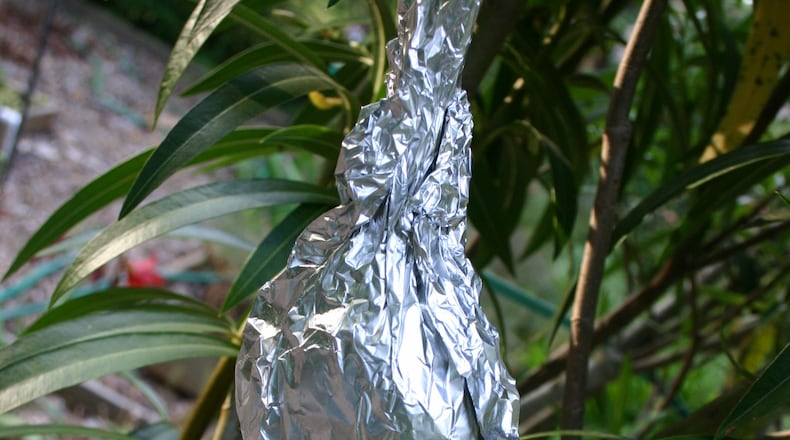Q: I noticed a branch on my red azalea that had beautiful light pink flowers. How can I reproduce it? Peggy Osterhoudt, Hiram
A: Air layering is a great way to make rooted cuttings from your favorite rose, camellia or azalea. The process involves wounding a limb, dusting the wound with rooting hormone, and wrapping the wound with a fistful of sphagnum moss that’s kept dark and moist for eight weeks. It’s pretty simple to do and you can get several rooted starts from the same plant. I have pictures of the process and a great video at bit.ly/GAlayer.
Q: We have an antique gardenia that normally has full-size leaves and big fragrant blossoms in the spring. I was inspecting it the other day and noticed the leaves looked weird. Their color is as much black as green. Marshall Lichtenstein, DeKalb County
A: I would wager that you had gardenia whiteflies in abundance on your shrub last year. The black leaves are covered with a film of sooty mold, which grows on the undigested sap excreted by the sucking insects last summer. The dark film hinders sunshine from penetrating to the gardenia’s leaf surface. Your situation is not an emergency, but if you let it continue, it will weaken your gardenia. The easiest way to control whiteflies is by applying a systemic insecticide, like imidacloprid, after the blooms fall. If you want to kill the insects immediately, use any garden insecticide, including insecticidal soap and neem. Aim the spray at the underside of leaves since that’s where the insects live. The black film on the leaves will gradually disappear in a month or so.
Q: I have a foxtail palm on which the fronds are not opening. I had a local service tell me it was a boron deficiency and they fertilized it but it hasn’t helped at all. Jeff Feig, Sarasota, Florida
A: A typical symptom of boron deficiency in palms is the foliage on new fronds sticks together so the frond does not open. It looks like a stick is emerging from the trunk. Assuming a boron deficiency is what you have, it is extremely important to know what your landscaper applied. There is a fine line between too little and too much. Excess boron will kill the palm if you follow one application with another. Find out exactly what the story is, and if you need more boron, apply a product named Solubor carefully according to label directions.
Email Walter at georgiagardener@yahoo.com. Listen to his occasional garden comments on “Green and Growing with Ashley Frasca” Saturday mornings on 95.5 WSB. Visit his website, www.walterreeves.com, or join his Facebook Page at bit.ly/georgiagardener, for his latest tips.
About the Author
The Latest
Featured

